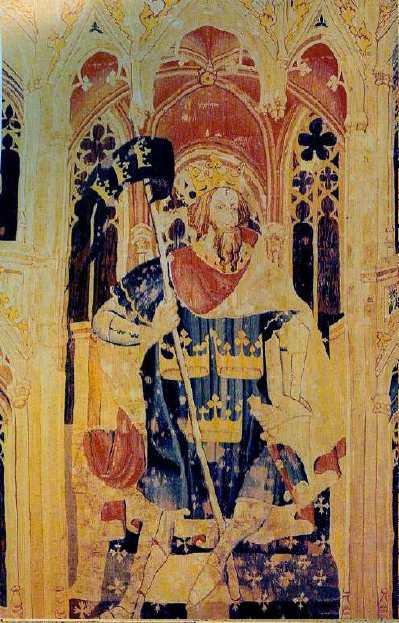Joshua
David
Judas Maccabeus
Hector
Alexander the Great
Julius Caesar
Arthur
Charlemagne
Godfrey of Bouillon

The Nine Worthies
copyright © 2002, Nathaniel Lane Taylor
“Lines 3406-3439 of the Alliterative Morte Arthure contain, in explication of Arthur’s second dream, a descriptive prophecy of the Nine Worthies (whom Arthur is to join, says the sage, and of whom Charlemagne and Godfrey of Bouillon were not yet born). The Nine Worthies had emerged as a pantheon of heroes by the mid fourteenth century and were popular subjects for exhortatory aristocratic art, with portrait series executed as frescos (such as those in the royal palace at Naples by Giotto), tapestries or busts. [1] A more desultory tradition of Nine Worthy Women existed, but with less unanimity over the incumbents, and a lower-profile diffusion. The (male) Nine Worthies were:
|
|
Three triads of heroes represent Classical Antiquity, the Old Testament, and contemporary European achievement. What does this selection suggest? What virtues or heroism does each worthy embody? What is importance of the worthies in the exhortatory prophecy to Arthur in the Morte?
[1] Georges Duby, History of Medieval Art, 3 vols. in 1 (Geneva, 1986; orig. pub. 1967), 3:153. Illustration of Arthur tapestry (Nicolas Bataille, circa 1385) from the Cloisters, New York, 3:158. See also Huizinga, Waning of the Middle Ages, chap. 4 (old translation). The most careful compilation and study of the theme, in both art and literature, is Horst Schroeder, Der Topos der Nine Worthies in Literatur und bildender Kunst (Göttingen: Vandenhoeck & Ruprecht, 1971).